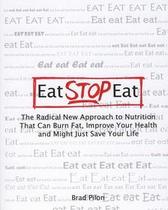The intermittent fasting approach to diet may go against everything you’ve heard about food,  metabolism and muscle. But the research (not to mention the experience of many practitioners—including yours truly) has led me to believe this is one of the most effective dietary strategies you can utilize.
metabolism and muscle. But the research (not to mention the experience of many practitioners—including yours truly) has led me to believe this is one of the most effective dietary strategies you can utilize.
You may have grown up reading about the importance of small, frequent meals for “firing up your metabolism.” This was the bodybuilding dogma for decades and I also used to believe it.
But research has not demonstrated any metabolic difference in small, frequent meals versus large infrequent eating. One study, for example, compared the metabolic affect of two meals a day with eating seven meals a day in thirteen subjects. Researchers concluded there were “no consequences for the total 24 h energy expenditure (24 h EE) of the two feeding patterns.”1
Having said this, I’ll tell you two distinct advantages to an intermittent fasting approach to diet:
1. Simplicity/Compliance
Small, frequent meals are fine if this way of eating helps you consistently hit your daily caloric goals. But eating 6-7 times a day may not be practical for those of us who don’t make a living in the fitness profession.
I’ve also found low carbohydrate approaches to be very effective. But compliance is also an issue here—going several days without carbs is just kind of a pain in the rear end (memories of “keto breath” come to mind).
This is the beauty of intermittent fasting. It does take some getting used to, but you don’t have to stress over eating every few hours or completely abstaining from one type of food. This is important, because long-term compliance will be the most important factor in whether or not a diet “works.”
For me the adjustment to the diet kind of works in reverse to other things I’ve tried. In other words, it gets easier to do over time. It seems going for short periods of time without eating re-wires the brain and reduces compulsive eating. That’s been my experience, and many other practitioners attest to the same.
2. Hormonal
Some fear a short fast will slow the metabolism or put the body in “starvation mode.” But this doesn’t seem to be the case, either. A short fasting period will, in fact, maximize your fat burning potential. There are positive effects on growth hormone and catecholamines, both of which aid in fat loss.
Going longer periods without eating also causes the body to burn fat (vs. carbohydrates) for fuel. The study I cited earlier noted that subjects experienced increased fat oxidization when eating only two meals a day.
Some fear going without food will cause muscle loss, but this doesn’t seem to be the case. The bottom line is this: you will not lose muscle mass while dieting if you lift weights.
Two Basic Approaches:
You’ll basically see two main strategies of intermittent fasting practiced by those who are wanting to lose fat or stay lean. I’ll explain them briefly here, but you can click the links for more information on helpful resources.
The 16/8 approach refers to fasting for 16 hours, then eating for 8. In other words, you’d skip breakfast and lunch, consuming your calories in the afternoon/evening.
Some plans call for a 24 hour fast once or twice a week (about every five days). Brad Pilon’s Eat-Stop-Eat is a very well researched book for those who want this simplified approach to intermittent fasting. Going 24 hours with no food may sound impossible, but the nice thing is you don’t have to go a whole day without a meal. In other words, you could have dinner one night then not eat until dinner the next night. It doesn’t mean you can eat everything in sight the rest of the time, but Pilon explains that in more detail in his book.
Which one of these is right for you? It really just depends on you. I prefer the structure of the 16/8 approach. But you may prefer the flexibility that comes with fasting only once every five days. The bottom line is either will work as long as you consistently apply the principles and keep a negative calorie balance long enough to lose fat.
Let me add one thing here: I don’t think intermittent fasting is the best for a beginner trainee trying to put on the first 15-20 lb. of muscle (especially if said trainee is in his teens or early twenties).
Reference:
1. Eur J Clin Nutr. 1991 Mar;45(3):161-9. Influence of the feeding frequency on nutrient utilization in man: consequences for energy metabolism.

